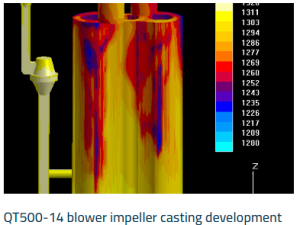Speeding Up Development with Quick Casting
Automobile prototype fast casting process is an innovative process that speeds up development new features and system of the automobile parts. The process takes the best of traditional casting and marries it with the speed of modern manufacturing process resulting in a massive decrease in time from design → functioning prototype.
Key Features of Rapid Casting
Reproduce In Cocoon Laying Speed: Fast casting is the secretion of a prototype in days instead of weeks or months as is customary in traditional castings. So, material and production boosts have been used to hasten mold creation and the casting process.
Versatility in materials: Squeeze casting has a wide range of materials in the automotive industry such as aluminum, magnesium, and zinc alloys. The former two are unsurprising in order to handle the rigours of an automotive environment, while the latter is key to keep weight low in a sector where every kilo counts.
Economical for Low Volume Production: With rapid casting, small volumes of parts can be produced at a low cost. Look to the automotive industry, in which there is typically a development step requiring prototypes for testing before full scale production begins, and you will find an economical solution through rapid casting, eliminating both the costs of expensive tooling and setup.
Superior Quality and Accuracy — The prototypes which come up through rapid casting are not only more accurate when compared to the others but are also a lot better in quality. Tolerances can be as tight as ±0.005 inches to ensure all parts are compliant with industry standards.

The Process of Rapid Casting
Step 1: A Master Pattern: The process of investment casting starts with a master pattern that can be generated with the help of CNC machine or 3-D printing. This pattern matches the shape and size of the same section of the original.
Once the master pattern is finished, step 2: Mold Making is taken where a mold is made around the master pattern with silicone or similar materials. This mold can produce many castings and is ideal for low to medium volume production.
Step 3: Casting the Prototype: The last thing that needs to be done is to pour the chosen molten material into the mold. The prototype is then cooled and solidified, and the final prototype is removed, a part that should be as close as possible to the original design.
Automotive Development Consequences
Rapid casting for automotive prototype production has changed the way that manufacturers look at the concept, development, and testing of auto parts. Shorter turnaround times allow manufacturers to build and test their designs far more often and affordably. In most, if not all, cases speed to market being a primary competitive advantage in a rapid pace automotive market.
Advantages over conventional ways.
These are few benefits that Rapid casting provides over traditional casting and stereo lithography-
Shorter Time to Market: Cars and their individual components can be brought to the market at a faster pace by shortening the prototyping phase.
Increased Innovation: Designers and engineers can freely experiment and iterate designs far more often without the high costs of time and material.
Resource Efficient: Less material goes to waste, and less manual labor is needed, so rapid casting is better for the environment.
Final Thoughts
Take the Next Step in Manufacturing with Rapid Casting for Automotive Prototyping It can produce high quality, accurate and durable prototypes in a very short period of time, making it play an irreplaceable role in the rapid development and testing of automotive innovations, ensuring that new technologies can be tested and optimized in a very fast and cost-effective way.